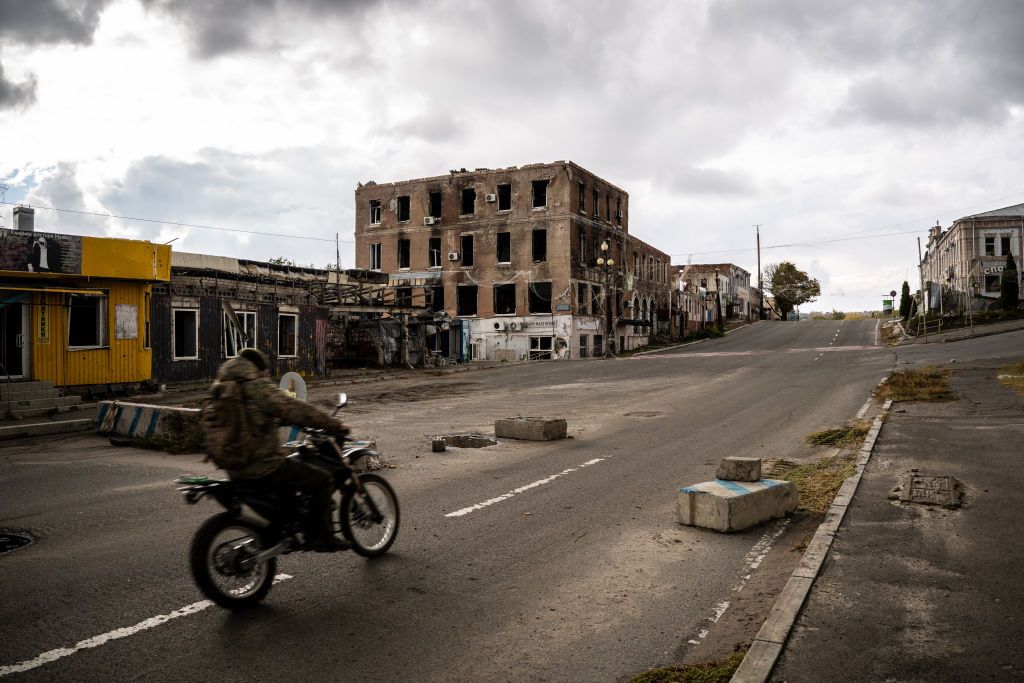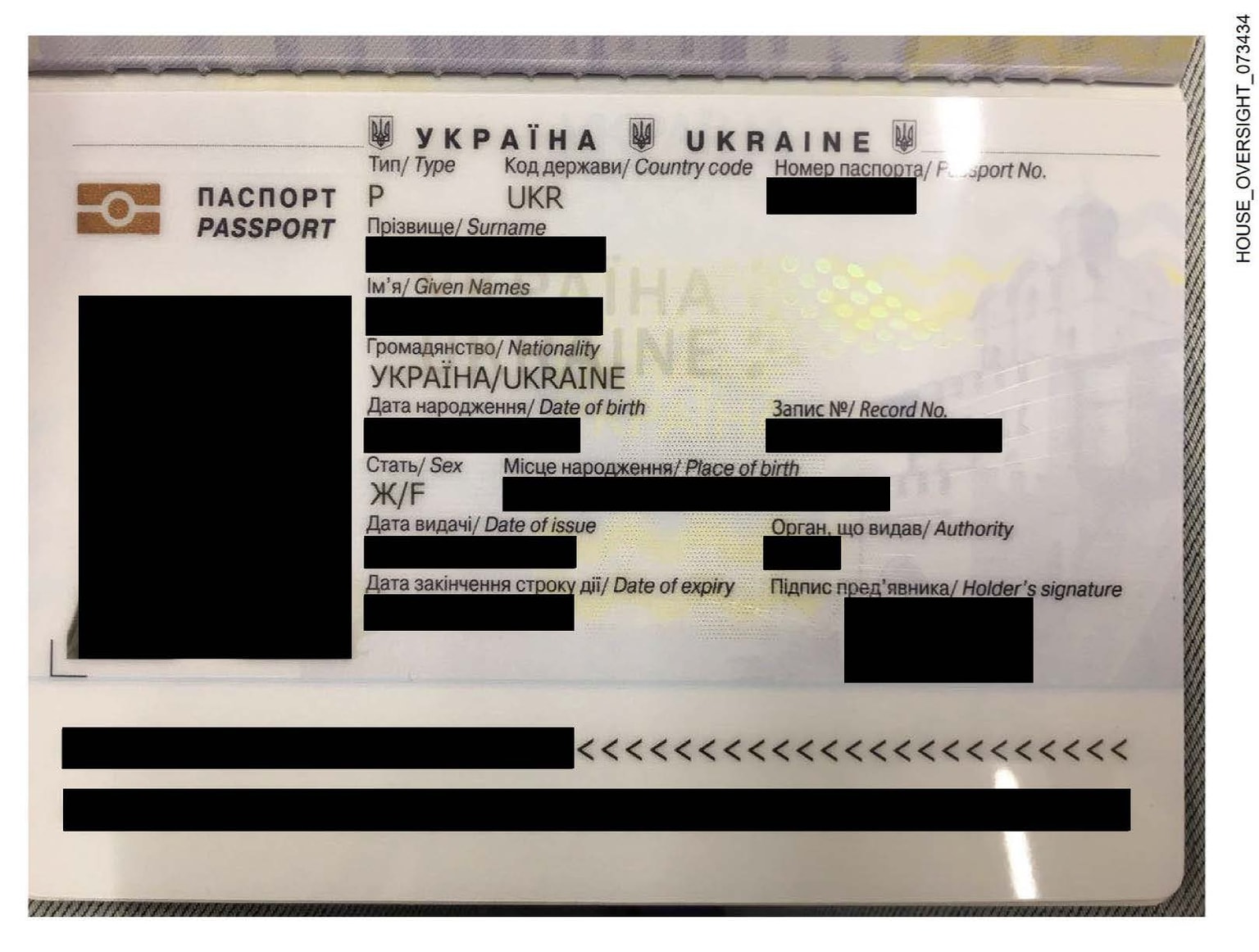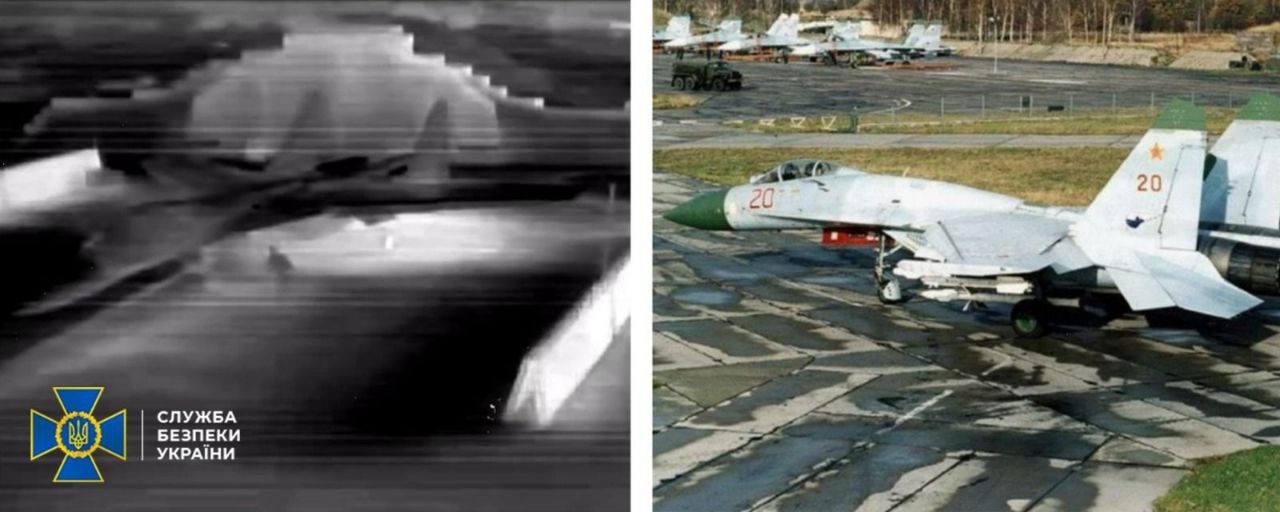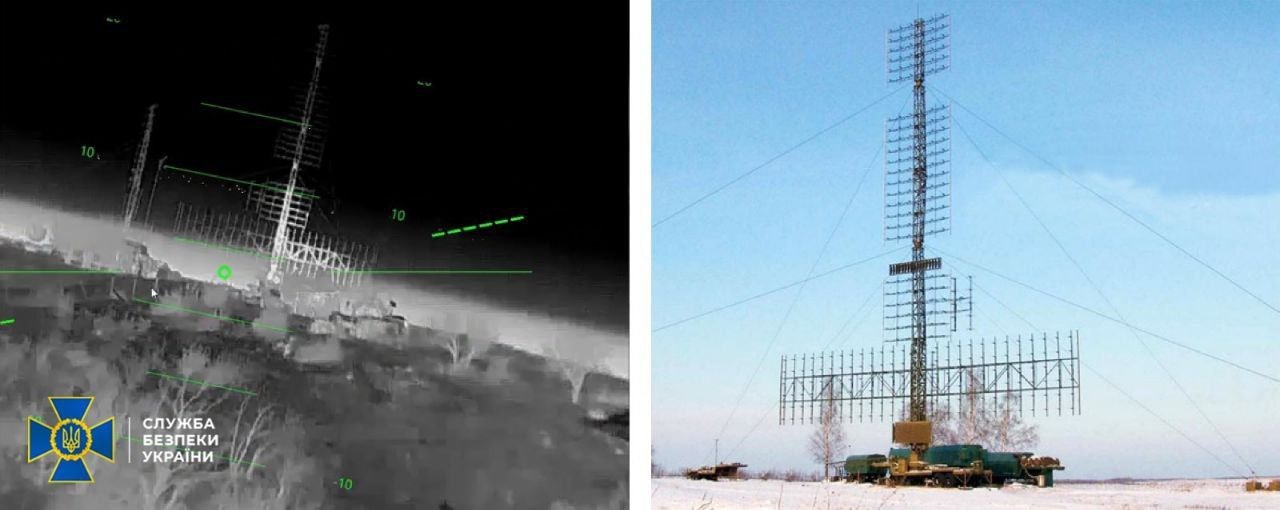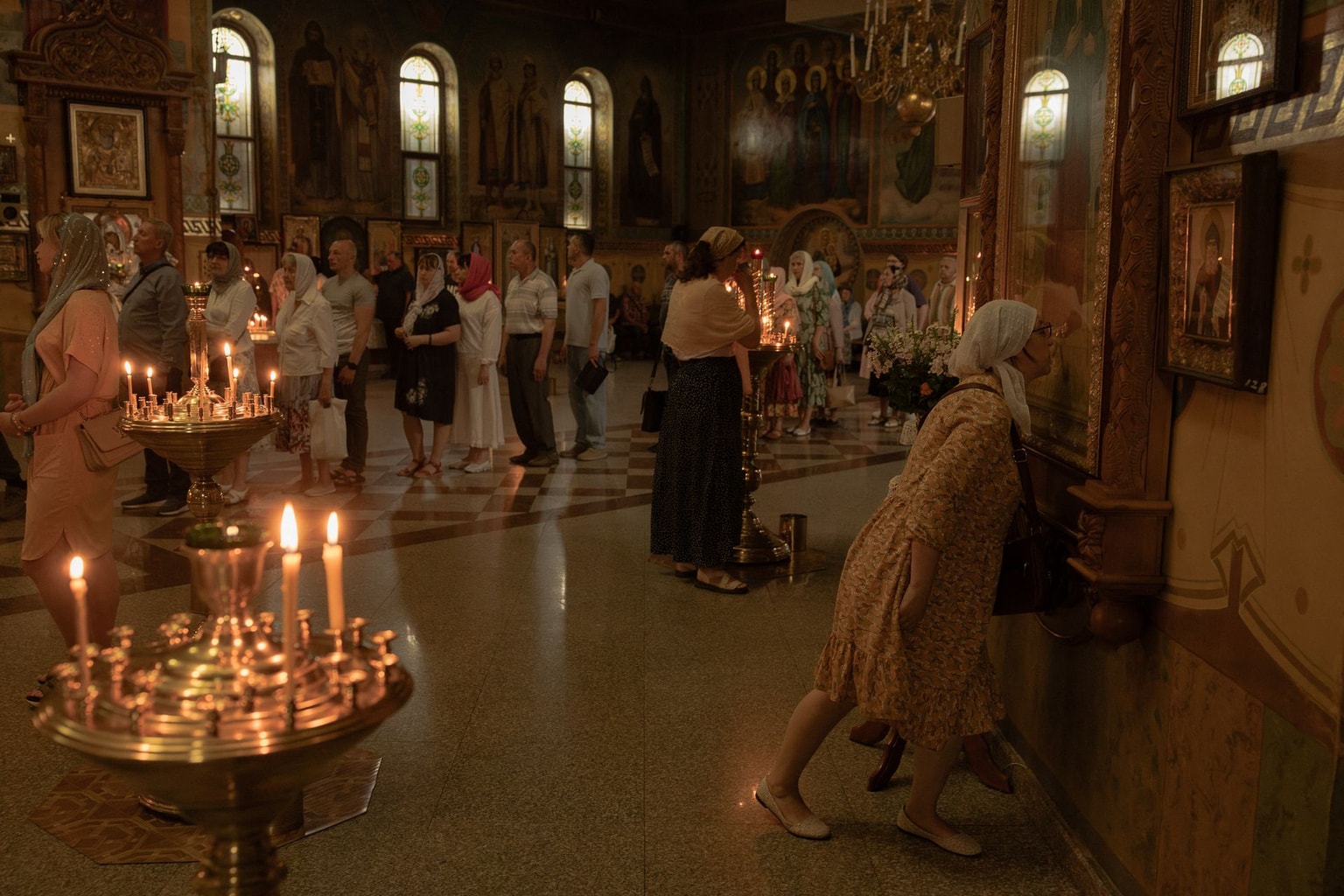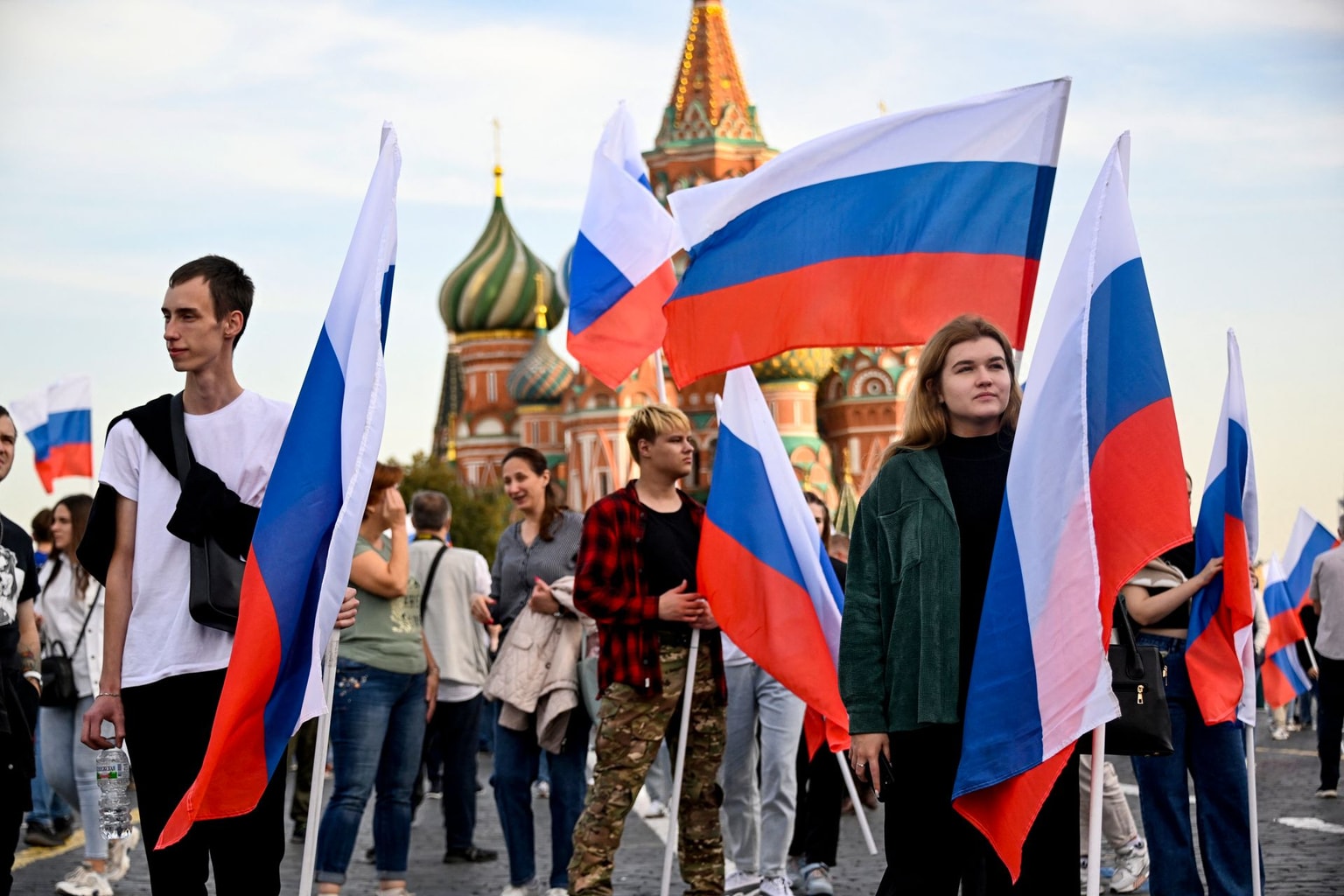
‘Destroying us little by little:’ Ukrainian troops worried about fate of Kursk operation
Ukraine clings onto its captured territories in Russia’s Kursk Oblast at all costs for leverage in possible peace talks.
Ukrainian soldiers spend their time underground until they receive orders in Sumy Oblast, a few kilometres from the Russian border on Sept. 30, 2024. (Fermin Torrano/Anadolu via Getty Images)
Editor’s note: Ukrainian soldiers featured in this story are identified by first name only since they spoke without authorization from their command.
Nearly four months after Kyiv launched a surprise cross-border incursion into Russia’s Kursk Oblast, some Ukrainian soldiers are increasingly pessimistic about the costly operation.
“Aviation is a key factor, and (Russian troops) are throwing all the aerial bombs every night, destroying us little by little,” said Ukrainian serviceman Oleksii with the 80th Air Assault Brigade that is currently deployed in Kursk Oblast.
When Ukrainian forces unexpectedly opened a new front in the northeast in August by breaking through Kursk Oblast, it was a significant morale-boosting moment for the country. Ukraine continued to advance forward day by day, shocking even Western allies with the stunning operation, despite being severely outgunned and outmanned across the front.
While unable to quickly prevent a deepening Ukrainian advance, Russian forces eventually began to counterattack in September to push the Ukrainians out. Military analysts say that there have been three waves thus far, with an upcoming one expected in December. Nearly 60,000 Russian troops are deployed in Kursk Oblast, Ukrainian public broadcaster Suspilne reported on Nov. 22, citing an undisclosed General Staff source.
The Kursk operation — the first time Russia was invaded by another country’s army since World War II — kicked off three months before uncertain U.S. presidential elections. Ukraine's grip on Russian territory has given it leverage in potential negotiations. But that grip is weakening. Reuters reported on Nov. 23, citing Kyiv's senior military source, that Ukraine has lost over 40% of the territory it previously captured in Kursk Oblast.

Russia could begin a larger push in December in an attempt to reclaim the entirety of Kursk Oblast before U.S. President-elect Donald Trump enters office in January 2025, according to Oleksandr Kovalenko, a Ukrainian military and political analyst with the Kyiv-based think tank Information Resistance.
Trump has claimed to end the war swiftly in a deal “that’s good for both sides,” leveraging what he described as “a very good relationship” with Russian President Vladimir Putin. A policy document envisages the new administration pushing Russia and Ukraine to enter peace talks by threatening to either halt or ramp up U.S. military aid to Kyiv should either side refuse, the Guardian reported on Nov. 28.
Meanwhile, Russia continues to gain ground across the front, particularly in the eastern Donbas region, as talks of freezing the front line surface with Trump’s return to power. The Ukrainian military leadership has claimed the operation had forced Moscow to pull forces to its southern region and alleviated stress for Kyiv in Donbas.
But Russia managed to capture over 1,600 square kilometers (roughly the size of London) of Donbas territories between September and November, despite "spending significant amounts of men and material in the process,” according to the Finland-based open-source analytical organization Black Bird Group.
The estimated Russian gains in Donbas over the fall surpass the territories Ukraine held in Kursk Oblast at its peak, which the senior Ukrainian military official told Reuters was roughly 1,380 square kilometers.
Ukraine currently controls about 800 square kilometers (roughly the size of the city of Chicago), the source told Reuters in late November.

Strategic value?
As the front line in Kursk Oblast more or less stabilizes and the Ukrainians are once again back on the defensive, more soldiers — many of whom said their units took heavy losses in the area — are beginning to question the incursion. Kyiv has allocated substantial resources for the operation, which is also supported by Western long-range striking capabilities, to hold the lands at any cost.
President Volodymyr Zelensky has hailed the Kursk operation, reiterating how it enabled Ukraine to return "a significant number" of Ukrainians from Russian captivity and prevent a re-occupation of bordering Sumy and Chernihiv oblasts.
"Instead of a buffer zone on the territory of Ukraine, which the Russians planned, we have created a buffer zone near our border on Russian territory,” Zelensky said during an October evening address.
Observing how Russian troops were advancing quicker in Donetsk Oblast from the distance, the Ukrainian soldiers stressed that the elite Ukrainian units deployed to invade Russia could have instead been used to hold the eastern front.
“Not one soldier whom I speak with understands why we are here (in Kursk Oblast),” Oleksii said, adding that many guys from his unit refused to be deployed in the Kursk operation and went home.
Other soldiers, including another serviceman from the elite 80th brigade, Illia, suggested that the Kursk incursion would likely be destined for a short life and that it was probably a Ukrainian attempt to distract the public from the worsening situation in Donbas.
“I'm 100% sure they'll force us out of Kursk Oblast, it's just a matter of time,” Illia told the Kyiv Independent. “It's a pity that people are dying for PR.”
Western and Ukrainian military experts are divided on the operation's strategic value, but they stressed that Russian troops would have advanced on the eastern front regardless of the Kursk operation.
Emil Kastehelmi, an analyst at the Black Bird Group analyzing the war closely through open source, said that there appear to be “more negatives” in the operation, with Ukraine prioritizing the operation “pretty high” despite the deteriorating Donbas situation.
Experts have said that the operation's pros included Ukraine bringing the war to Russian territory and enhancing the protection of bordering areas in Ukraine’s northern Sumy, Kharkiv, and Chernihiv oblasts.
The operation has also forced Russia to divert some troops that could have been deployed elsewhere to its own Kursk Oblast and suffer a high cost to reclaim the territories. Ukraine claimed in late October that Russia had lost over 17,000 soldiers in Kursk Oblast since August.


The recent deployment of North Korean soldiers to the area as reserves signals that Moscow is also suffering personnel shortfalls, Kovalenko from the Kyiv-based think tank Information Resistance said. According to Western and Ukrainian government estimates, Russia has already deployed 10,000 to 11,000 North Korean soldiers in Kursk Oblast.
Russian troops are currently unleashing the heaviest offensive from the western direction from the village of Lyubimovka along the Snagost River in the Kursk region to the west of the Ukrainian stronghold, according to Kovalenko. “(Russian troops) are trying to put pressure from the west to the east,” Kovalenko said, adding that the Snagost used to be Ukraine’s geographical barrier until Russians toppled over the area in October.
Ukrainian soldiers on the ground said that Russia continues to attack in small groups supported by equipment and swarms of deadly first-person-view drones.
It is unclear how long Ukraine can realistically occupy the patch of Russian territory. Among the struggles that Ukrainian troops face include the apparent lack of high-quality fortifications, at least in large amounts, and good defensive terrain, according to Kastehelmi from the Black Bird Group.
And as Ukraine loses more territory in Kursk Oblast, it would make it more difficult for Ukrainian forces to maneuver and easier for Russian troops to observe movements in the Ukrainian-controlled areas, he added.
“There are issues, but at least it seems to be a bit more stabilized than it was earlier in the, in the autumn when the Russians struck the Ukrainians back more quickly,” he assessed.
The fate of the Russian region would largely depend on whether Moscow prioritizes the Kursk operation, as Russia is not facing a threat from Ukraine holding onto these areas from a military point of view, he explained.
“The Ukrainians don't really control anything that important in terms of, for example, cities or areas, and they aren't really threatening (Russia with) anything important by holding this area,” he said, adding that the situation has become “increasingly political” for Moscow.
The recent Western permission to strike into Russia with long-range weaponry paved the way for Kyiv to hit military targets from afar. Multiple Western media reports about the Ukrainian strikes using U.S.-made long-range ATACMS and British-supplied Storm Shadow missiles in Russian bordering regions. The Russian Defense Ministry on Nov. 26 admitted that Ukraine hit a Russian S-400 air defense system and an airfield in embattled Kursk Oblast with U.S.-provided ATACMS.

The soldiers on the ground said that they had not felt the results of these long-range strikes on the battlefield.
Serhii Kuzan, co-founder and chairman of the Ukrainian Security and Cooperation Center, said that the long-range strikes “help a lot” in the defense of Kursk Oblast. The warehouse of the 67th arsenal of Russia's Main Missile and Artillery Directorate in Bryansk Oblast that Ukraine claims to have struck with ATACMS equipped the Kursk Grouping of Russian forces.
Neutralizing the ammunition stockpiles allowed Ukraine to slow down the pace of the Russian offensive and could disrupt Moscow’s plans, the expert stressed. “This means that we have lowered their fighting capacity,” he said, continuing: “They understand they already can’t count on this warehouse and that they must rearrange again, make adjustments, and make their plans from new calculations.”
But while destroying Russian military components that could be used against Ukraine is helpful, “the effect is still probably rather limited as Ukrainian missile stocks are also limited,” Kastelmi said.
Low stocks don’t allow Ukraine to conduct a large-scale strike campaign targeting a substantial number of headquarters, ammunition depots, training centers, and logistical hubs to “paralyze the whole system,” according to Kastelmi.
“Because the permission to shoot the missiles on the Russian soil like was given so late and missile stocks are limited, it really means that it's a nice bonus, but it won't change the larger dynamics of the battle,” he added.
The critical components would instead be manpower, quality of troops, and the availability of equipment, drones, and artillery, according to Kastelmi.
“A bunch of combat-ready units are being wiped out (by Russian forces),” Illia, the soldier from the 80th brigade deployed in Kursk Oblast, said, stressing how exhausted his guys were.
“It’s possible that I don’t know something or don’t understand something, but it’s sh*t.”

